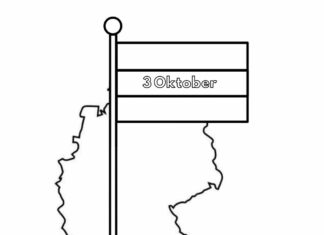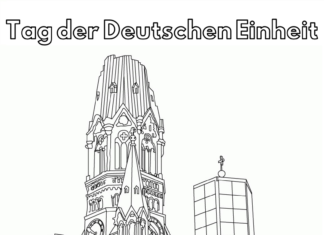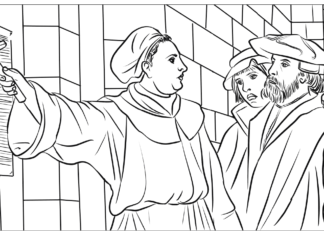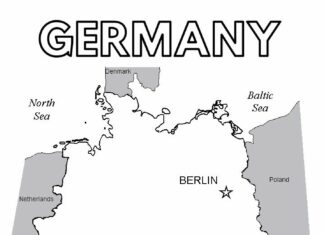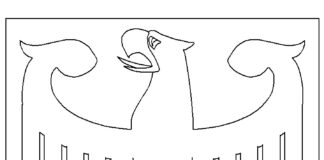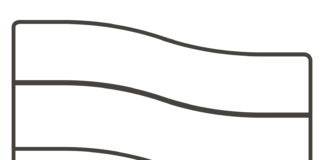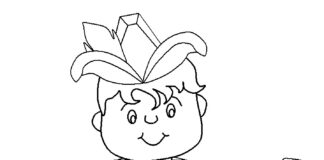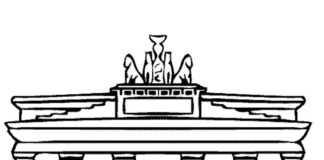German Reunification Day, also known as "Tag der Deutschen Einheit" (German Unity Day), is celebrated on October 3 each year. It is Germany's national holiday, commemorating the formal end of the country's division into two parts: the German Democratic Republic (GDR, or East Germany) and the Federal Republic of Germany (FRN, or West Germany).
German Reunification Day Coloring Pages
information
- Division of Germany: After World War II, Germany was divided by the victorious powers (USSR, USA, UK and France) into two parts: eastern and western. The GDR and West Germany were created. This division lasted for many decades and was evident in the daily lives of the people of both countries.
- Fall of the Berlin Wall: The fall of the Berlin Wall in 1989 was the symbolic beginning of Germany's reunification process. The Wall divided Berlin in a political and physical context, and its fall became a metaphor for reunification.
- Four-Power Agreement: On October 3, 1990, the "Treaty of Final Settlement for Germany" was signed, formally uniting the two parts of the country. The treaty received the consent of all four occupying powers, as well as representatives of West Germany and East Germany.
- New capital: After the reunification of Germany, Berlin was again recognized as the country's capital. Prior to reunification, the capital of West Germany was Bonn.
- Unity Day: German Unity Day was established as a national holiday to commemorate the country's reunification and the end of the separation between East and West.
- Celebration: German Reunification Day is a public holiday throughout the country. Celebrations include state ceremonies, speeches, parades, concerts and cultural events. Activities for families and children are also usually organized.
- Unity and challenges: Despite reunification, there are differences between East and West Germany on issues such as the economy, employment and mentality. The reunification process has faced many challenges, but is considered an important step in European history and the shaping of modern Germany.
trivia
- Anniversary of Napoleon's defeat: The Day of German Unity is celebrated on October 3. The date is no coincidence, as it was on October 3, 1813 that the Battle of the Nations at Leipzig took place. This was the decisive battle of the Prussian-Russian war against Napoleon Bonaparte, which contributed to the weakening of French influence in Europe and enabled the further formation of the national identity of the Germans.
- Two Unity Holidays: Germany celebrated Reunification Day until 1990, when the country was formally reunited. However, October 3 became an official day of celebration after the signing of the Unification Treaty on August 31, 1990.
- Shlagbaum as a symbol: The symbolic photo of the border barrier between East and West Germany has become one of the most iconic images associated with German reunification. This moment was one of the symbolic breakthroughs that ushered in the physical unification of the country.
- Cultural Capital: On the day of German reunification, celebrated as Reunification Day, there are many cultural and artistic events. Berlin becomes a center of attraction for locals and tourists, offering concerts, exhibitions and shows.
- Parades and celebrations: Parades and ceremonies are being held in various German cities to mark Reunification Day. In Berlin, a central ceremony is held with the participation of the president and other important political figures.
- Unique logo: Each year of the Unity Day celebration, a special version of the logo related to the Unity theme is created. This logo is used in the promotion of events and activities related to the holiday.
- Wall symbol: The Berlin Wall, which separated the city and countries of East and West Germany, became one of the most recognizable symbols of the Cold War and the division of Europe. Its fall and demolition was an important symbolic event for reunification.
- Time Traveler: On the day of the 25th anniversary of German reunification in 2015, Angela Merkel stressed that as a young person in East Germany she witnessed the division of the country, and now as chancellor she stands in a united state.

